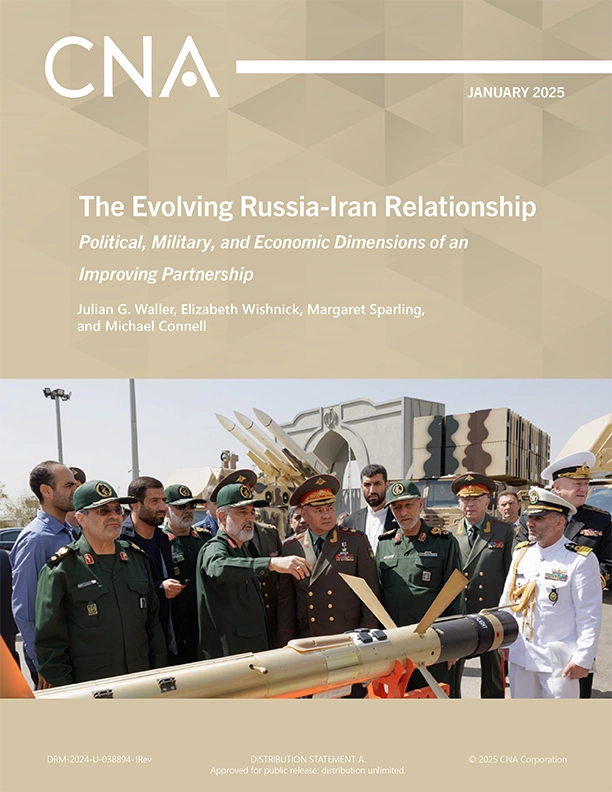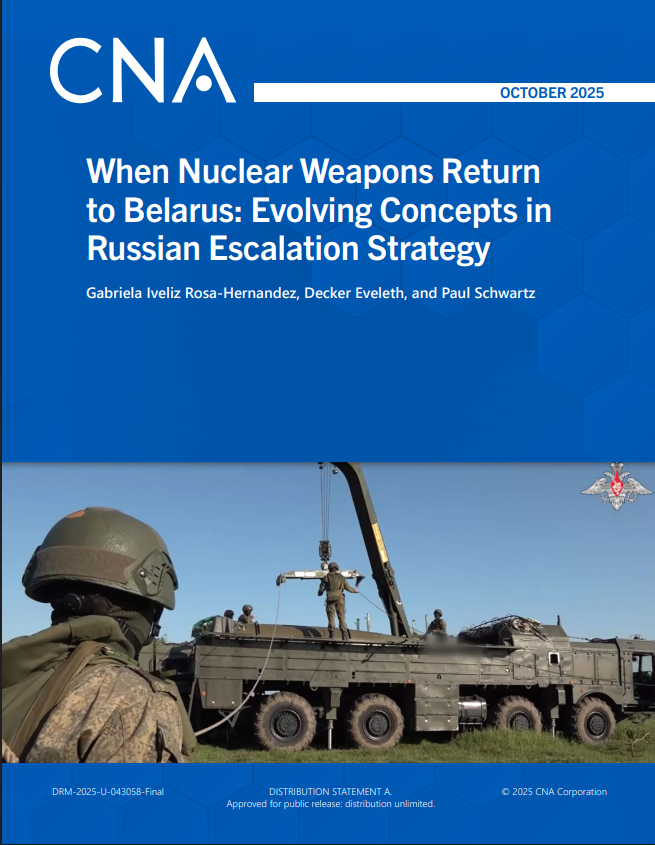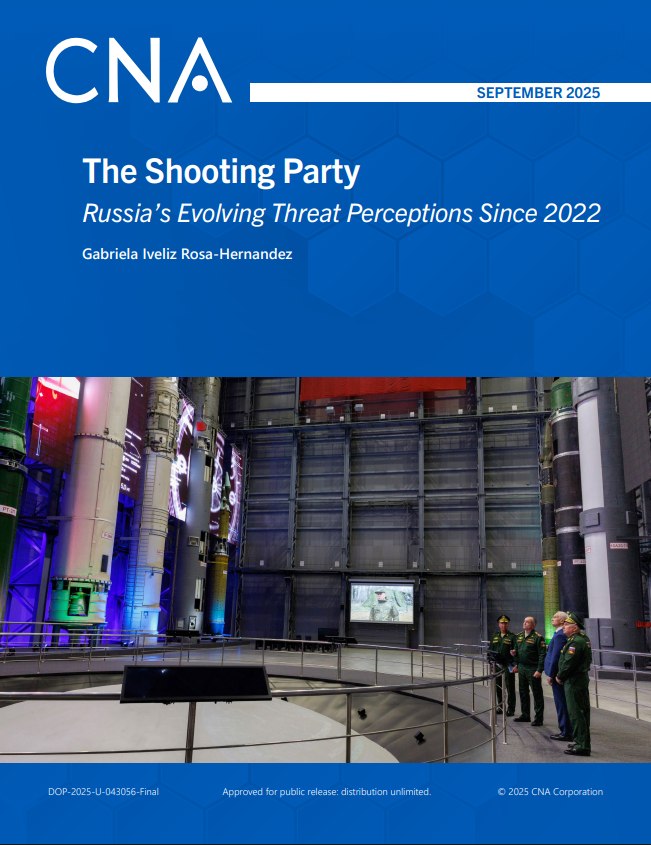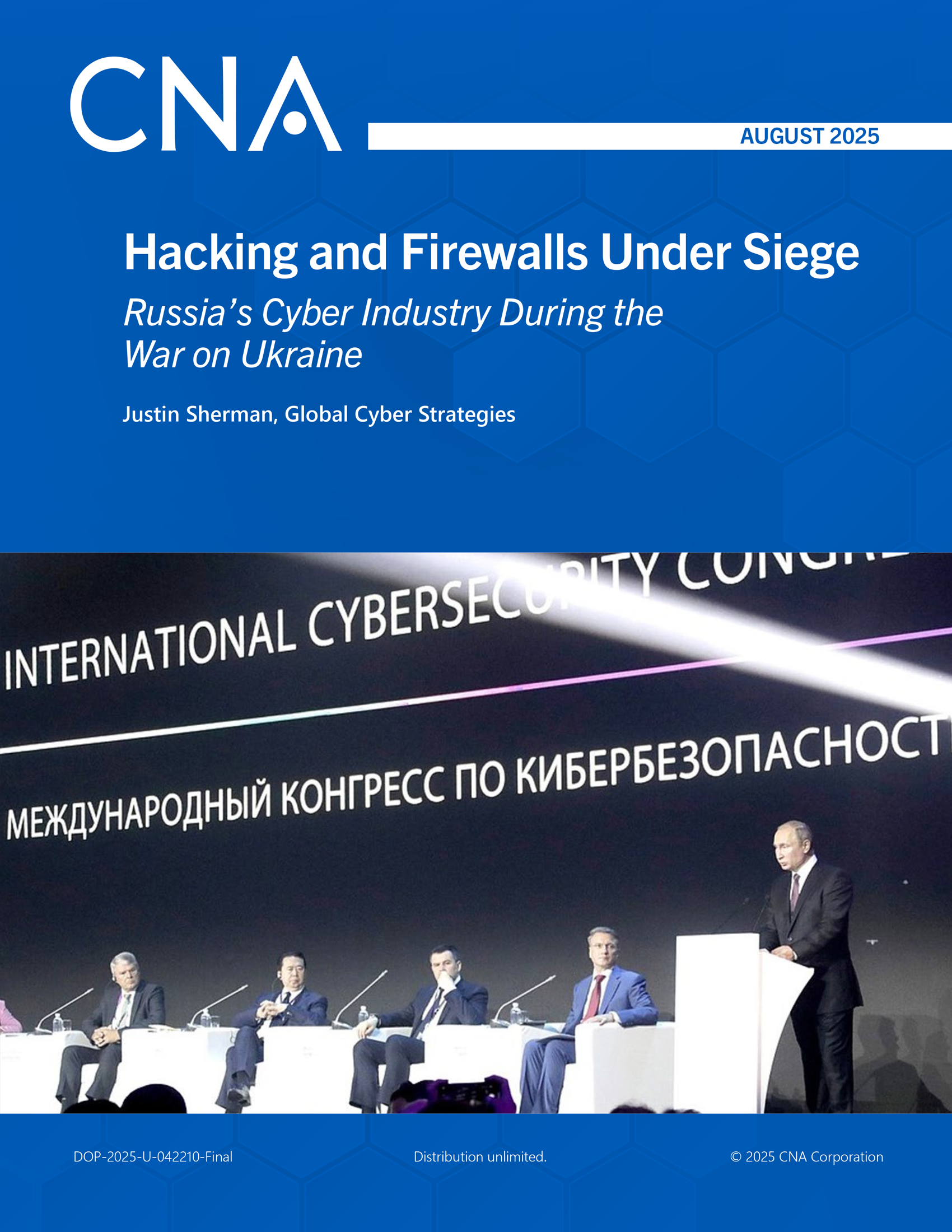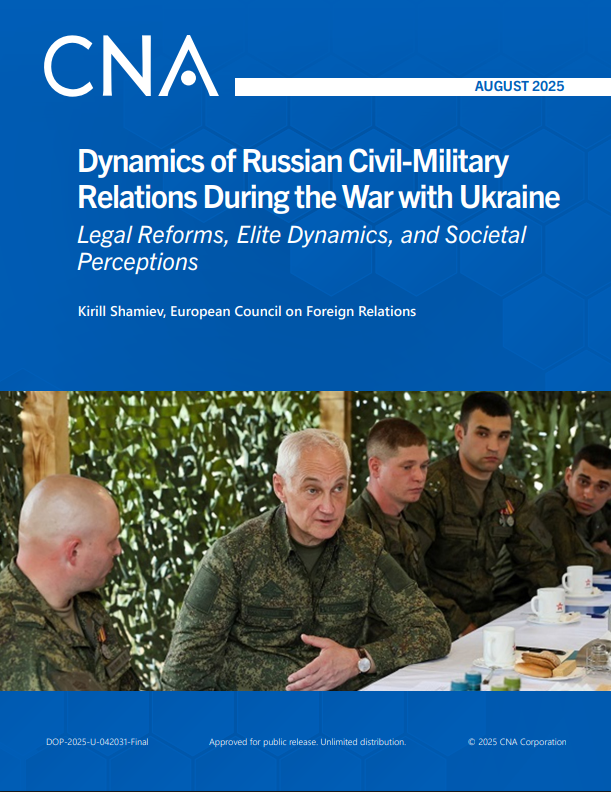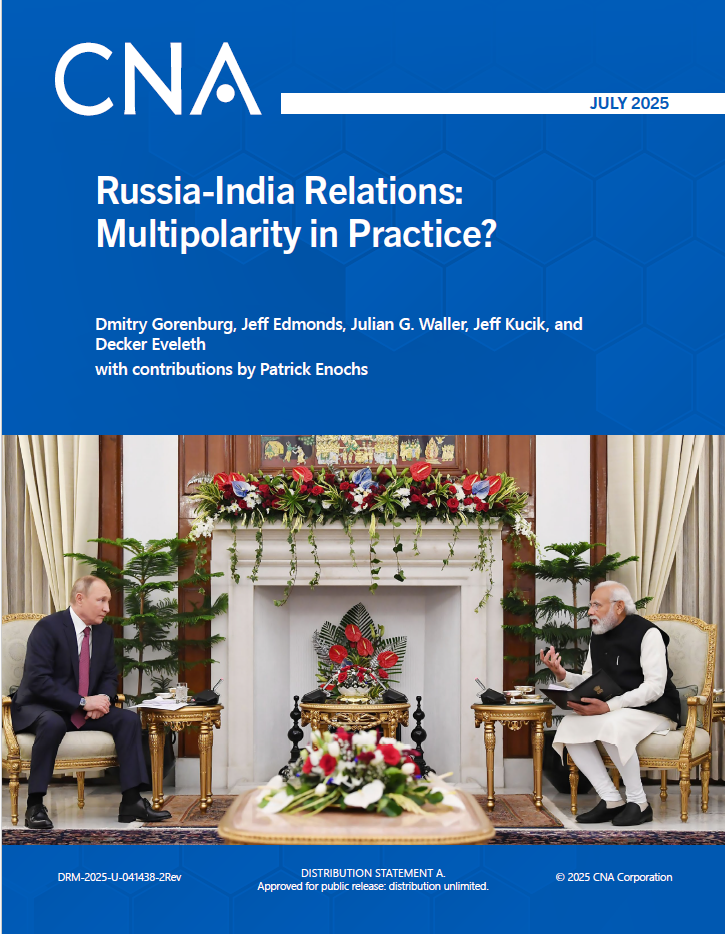The Evolving Russia-Iran Relationship
Executive Summary
The relationship between Russia and Iran has changed significantly over the course of the past decade, with considerable dynamism evident, especially since the onset of the Russia-Ukraine war in 2022. This report examines the relationship in both temporal and thematic dimensions. To do so, we examine a variety of indicators that characterize trends in political, military, and economic cooperation. This report presents shifts in these three relationship dimensions in light of both historical trends and the recent past. In doing so, it identifies a series of constraints and drivers of the relationship and then introduces an indicator-based method to make controlled comparisons across and within relationship dimensions.
Major categories for these indicators include the following: political indicators, such as policy coordination mechanisms, public diplomacy, and interactive engagements; military indicators, such as military diplomacy, military cooperation, technical cooperation, exercises and training, coordination and information sharing, and access, basing, and overflight; and economic indicators, such as economic coordination, institutional linkages, cross-border trade, investments, loans, and engagement in strategic sectors.
Summary of key findings
The bilateral Russia-Iran relationship has been traditionally characterized as a mix of cooperation, competition, and suspicion. Since the early 1990s, the relationship has improved considerably. By the mid-2010s, a more varied baseline emerged, marked by growing cooperation in military affairs as well as some moderate alignment of economic interests. Since the start of the Russia-Ukraine war, the bilateral relationship has deepened significantly and pivoted from cautious engagement to fuller collaboration across a range of dimensions. This evolution can be traced partially to the prewar period, when Russia and Iran cooperated in regard to the Syrian Civil War, as well as in the wake of the fallout from the collapse of the Joint Comprehensive Plan of Action (JCPOA), which ended in 2018.
The current Ukrainian and earlier Syrian conflicts, coupled with the effect of Western sanctions on Russia and Iran, have served as the major impetus for the improvement in the bilateral relationship. Prior constraints on Moscow’s engagement with Tehran (on nuclear issues and secondary sanctions especially) have diminished, although Moscow remains cautious. It is likely that the Israel-Hamas war will reinforce the trend of improved bilateral relations over the short to medium term.
On the political dimension, Russia and Iran share an increasing geopolitical alignment through the use of “civilizationist” and anti-Western rhetoric, coupled with increased contact points between government figures through high-level meetings and newly signed memoranda of understanding across a range of issue areas. Notably, senior political elites, rather than just diplomatic elites, are now partaking frequently in regularly scheduled public meetings.
On the military dimension, we observed a significant number of official engagements by senior-level officers and government officials displaying wide-ranging cooperation. After Russia’s full-scale invasion of Ukraine, the scale of arms transfers between Russia and Iran, including sales and coproduction of military equipment and related training, increased. The evidence we reviewed also suggests a high incidence of dark port calls in support of growing arms transfers between the two states. Bilateral and multilateral exercises also increased, which had not occurred in prior years. Military ties in other areas, however, remain more limited.
Economic ties traditionally have been a weak point in the Russia-Iran relationship; however, since the Russian invasion of Ukraine in 2022, Moscow and Tehran have begun to invest substantially in the development of bilateral economic ties. This collaboration has included new trade agreements, closer integration of the banking sectors, increased cross-border trade, and increased investment in several strategic sectors. Nevertheless, the inherent incompatibility and natural competition between the two economies are likely to limit the long-term growth of economic relations.
Analytic implications
The Russia-Iran relationship is likely to continue deepening over time, especially as long as both countries remain in an antagonistic and oppositional position vis-à-vis Western states and Western-dominated international organizations. Nevertheless, full rapprochement with Russia remains controversial for Iranian officials, who have the potential to moderate this trend toward closer bilateral ties.
Although mistrust remains in some areas, a sharp break between Russia and Iran in the short to medium term is unlikely. As long as the Russia- Ukraine war continues, the pressing demand by the Russian military for Iranian munitions and drones will ensure that relations are kept on track by Russia’s political leadership. It should also be assumed that Russia and Iran will continue to find a compelling logic in maintaining good relations, even if only for purely instrumental reasons.
The Russia-Iran relationship is a bilateral dynamic nested in a wider context of Russia’s shifting, anti-Western alignment, with other factors involved— most notably with China. Nevertheless, political engagement between Russia and Iran does not necessarily mean trilateral engagement or coordination, and policy-makers should be wary of assuming a united “axis” across the three countries. Rather, the Eurasian international environment must be understood as a series of interlocking but separate bilateral relationships, with aligned interests in broad terms and relevant intergovernmental fora—such as the Shanghai Cooperation Organization—that can provide a sense of geopolitical cohesion.
The threat of US sanctions on countries found to be violating the terms of the JCPOA was traditionally a deterrent to deeper Russian economic engagement with Iran. Since 2022 and the onslaught of US and Western sanctions on Russia (combined with US and Western military support for Ukraine), this threat no longer applies. US economic statecraft no longer deters Russian officials or Russian businesses from investing in and engaging with the Iranian economy—many Russians already face severe sanctions and see little left to fear.
Although Russia has historically provided Iran with many sought-after industrial goods, the relationship has now flipped or at least begun to balance out. Iran now provides Russia with vital industrial goods that help Russia address wartime constraints. Such support helps prolong Russia’s ability to wage war in Ukraine. Furthermore, closer Russia-Iran economic relations have led to Iran instructing Russian officials on how to evade sanctions. This type of collaboration can affect the long-term viability of the sanctions imposed by the US and other Western nations.
Download reportApproved for public release: distribution unlimited.
Details
- Pages: 90
- Document Number: DRM-2024-U-038894-1Rev
- Publication Date: 1/29/2025
